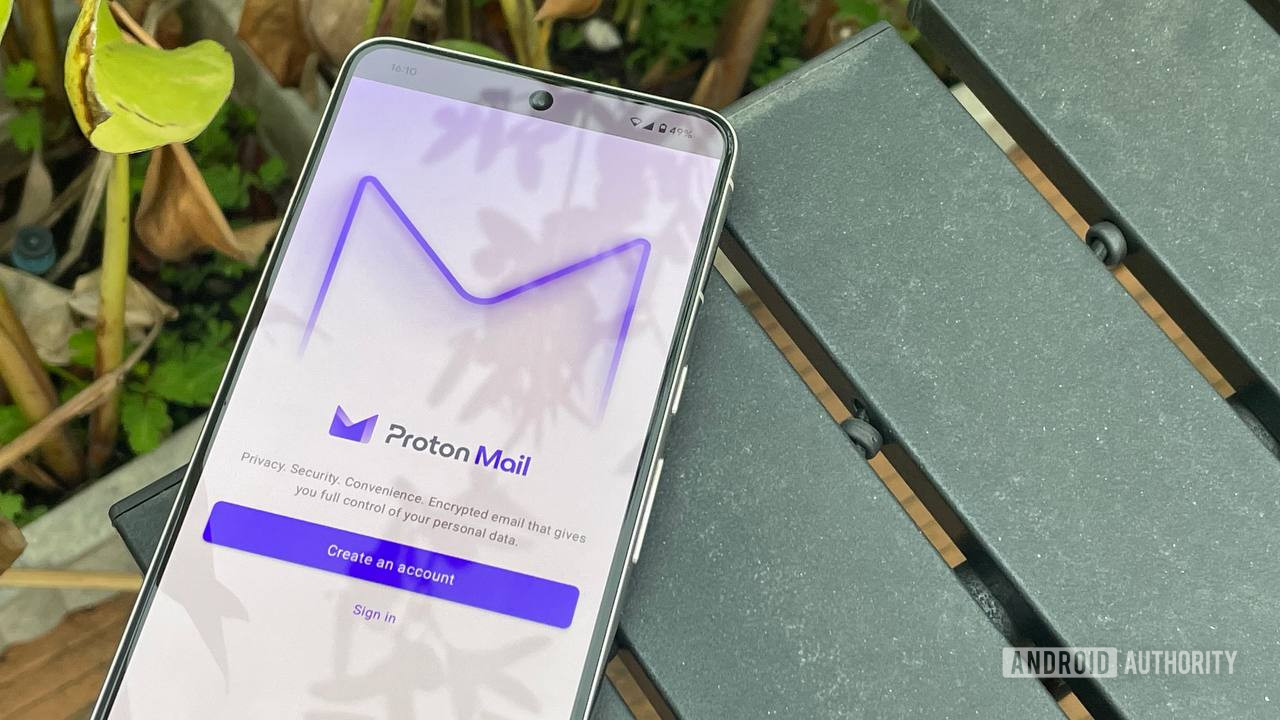Incognito Mode Is a Lie Here’s Who Still Sees You
Is Incognito Mode Really Private? In the digital age, privacy is a growing concern for many internet users. One common feature that people turn to for privacy is "Incognito Mode" in web browsers. But how private is Incognito Mode really? Let's delve into what Incognito Mode does and doesn't do to protect your privacy. Understanding Incognito Mode Incognito Mode, also known as Private Browsing, is a feature available in most web browsers, including Google Chrome, Mozilla Firefox, and Apple Safari. When you browse the internet in Incognito Mode, the browser does not save your browsing history, cookies, site data, or information entered in forms. What Incognito Mode Does No Browsing History: Incognito Mode does not keep a record of the websites you visit. Once you close the Incognito window, your browsing history is erased. No Cookies or Site Data: Cookies and site data are deleted after you close the Incognito window. This means that websites won't be able to track your activity across different sessions. No Form Data: Information entered in forms, such as usernames and passwords, is not saved. What Incognito Mode Doesn't Do While Incognito Mode provides a certain level of privacy, it is important to understand its limitations: Not Completely Anonymous: Incognito Mode does not make you anonymous on the internet. Your Internet Service Provider (ISP), employer, or the websites you visit can still track your activity. No Protection Against Malware: Incognito Mode does not protect your computer from malware or viruses. You still need to use antivirus software and practice safe browsing habits. No Encryption: Incognito Mode does not encrypt your internet traffic. For enhanced security, consider using a Virtual Private Network (VPN). Downloads and Bookmarks: Files you download and bookmarks you create while in Incognito Mode are still saved to your computer. When to Use Incognito Mode Incognito Mode can be useful in several scenarios: Shared Computers: If you are using a shared or public computer, Incognito Mode can help prevent others from seeing your browsing history. Shopping for Gifts: If you are shopping for gifts and don't want recommendations or ads to give away the surprise, Incognito Mode can be helpful. Multiple Accounts: If you need to log into multiple accounts on the same website simultaneously, Incognito Mode allows you to do so without logging out of your primary account. Best Practices for Online Privacy While Incognito Mode offers some privacy benefits, it is not a comprehensive solution. Here are some additional steps you can take to enhance your online privacy: Use a VPN: A VPN encrypts your internet traffic and hides your IP address, providing an additional layer of privacy. Enable Two-Factor Authentication (2FA): Adding 2FA to your accounts can help protect them from unauthorized access. Regularly Update Software: Keep your operating system, browser, and antivirus software up to date to protect against security vulnerabilities. Be Cautious with Personal Information: Be mindful of the information you share online and use strong, unique passwords for your accounts. Tor Browser: The Tor Browser routes your internet traffic through a network of volunteer-operated servers, enhancing anonymity and making it harder for websites or ISPs to track your activity. It’s especially useful for sensitive browsing but may be slower due to its routing process. Conclusion Incognito Mode provides a basic level of privacy by not saving your browsing history, cookies, or form data. However, it is not a foolproof solution for complete online privacy. Understanding its limitations and combining it with other privacy practices can help you better protect your personal information in the digital world. Stay informed and take proactive steps to safeguard your online privacy. Always try to use authentic software, files, and systems, and educate others about cyber threats. Stay up to date with the latest security practices because,No One Is Ever 100% Safe Online.

Is Incognito Mode Really Private?
In the digital age, privacy is a growing concern for many internet users. One common feature that people turn to for privacy is "Incognito Mode" in web browsers. But how private is Incognito Mode really? Let's delve into what Incognito Mode does and doesn't do to protect your privacy.
Understanding Incognito Mode
Incognito Mode, also known as Private Browsing, is a feature available in most web browsers, including Google Chrome, Mozilla Firefox, and Apple Safari. When you browse the internet in Incognito Mode, the browser does not save your browsing history, cookies, site data, or information entered in forms.
What Incognito Mode Does
- No Browsing History: Incognito Mode does not keep a record of the websites you visit. Once you close the Incognito window, your browsing history is erased.
- No Cookies or Site Data: Cookies and site data are deleted after you close the Incognito window. This means that websites won't be able to track your activity across different sessions.
- No Form Data: Information entered in forms, such as usernames and passwords, is not saved.
What Incognito Mode Doesn't Do
While Incognito Mode provides a certain level of privacy, it is important to understand its limitations:
- Not Completely Anonymous: Incognito Mode does not make you anonymous on the internet. Your Internet Service Provider (ISP), employer, or the websites you visit can still track your activity.
- No Protection Against Malware: Incognito Mode does not protect your computer from malware or viruses. You still need to use antivirus software and practice safe browsing habits.
- No Encryption: Incognito Mode does not encrypt your internet traffic. For enhanced security, consider using a Virtual Private Network (VPN).
- Downloads and Bookmarks: Files you download and bookmarks you create while in Incognito Mode are still saved to your computer.
When to Use Incognito Mode
Incognito Mode can be useful in several scenarios:
- Shared Computers: If you are using a shared or public computer, Incognito Mode can help prevent others from seeing your browsing history.
- Shopping for Gifts: If you are shopping for gifts and don't want recommendations or ads to give away the surprise, Incognito Mode can be helpful.
- Multiple Accounts: If you need to log into multiple accounts on the same website simultaneously, Incognito Mode allows you to do so without logging out of your primary account.
Best Practices for Online Privacy
While Incognito Mode offers some privacy benefits, it is not a comprehensive solution. Here are some additional steps you can take to enhance your online privacy:
- Use a VPN: A VPN encrypts your internet traffic and hides your IP address, providing an additional layer of privacy.
- Enable Two-Factor Authentication (2FA): Adding 2FA to your accounts can help protect them from unauthorized access.
- Regularly Update Software: Keep your operating system, browser, and antivirus software up to date to protect against security vulnerabilities.
- Be Cautious with Personal Information: Be mindful of the information you share online and use strong, unique passwords for your accounts.
- Tor Browser: The Tor Browser routes your internet traffic through a network of volunteer-operated servers, enhancing anonymity and making it harder for websites or ISPs to track your activity. It’s especially useful for sensitive browsing but may be slower due to its routing process.
Conclusion
Incognito Mode provides a basic level of privacy by not saving your browsing history, cookies, or form data. However, it is not a foolproof solution for complete online privacy. Understanding its limitations and combining it with other privacy practices can help you better protect your personal information in the digital world. Stay informed and take proactive steps to safeguard your online privacy.
Always try to use authentic software, files, and systems, and educate others about cyber threats. Stay up to date with the latest security practices because,No One Is Ever 100% Safe Online.












































































































































































![[The AI Show Episode 146]: Rise of “AI-First” Companies, AI Job Disruption, GPT-4o Update Gets Rolled Back, How Big Consulting Firms Use AI, and Meta AI App](https://www.marketingaiinstitute.com/hubfs/ep%20146%20cover.png)

























































































































![[DEALS] The ChatGPT & AI Super Bundle (91% off) & Other Deals Up To 98% Off – Offers End Soon!](https://www.javacodegeeks.com/wp-content/uploads/2012/12/jcg-logo.jpg)



![How to make Developer Friends When You Don't Live in Silicon Valley, with Iraqi Engineer Code;Life [Podcast #172]](https://cdn.hashnode.com/res/hashnode/image/upload/v1747360508340/f07040cd-3eeb-443c-b4fb-370f6a4a14da.png?#)



























































































































































































































-xl-(1)-xl-xl.jpg)























![iPhone 17 Air Could Get a Boost From TDK's New Silicon Battery Tech [Report]](https://www.iclarified.com/images/news/97344/97344/97344-640.jpg)
![Vision Pro Owners Say They Regret $3,500 Purchase [WSJ]](https://www.iclarified.com/images/news/97347/97347/97347-640.jpg)
![Apple Showcases 'Magnifier on Mac' and 'Music Haptics' Accessibility Features [Video]](https://www.iclarified.com/images/news/97343/97343/97343-640.jpg)
![Sony WH-1000XM6 Unveiled With Smarter Noise Canceling and Studio-Tuned Sound [Video]](https://www.iclarified.com/images/news/97341/97341/97341-640.jpg)







































































